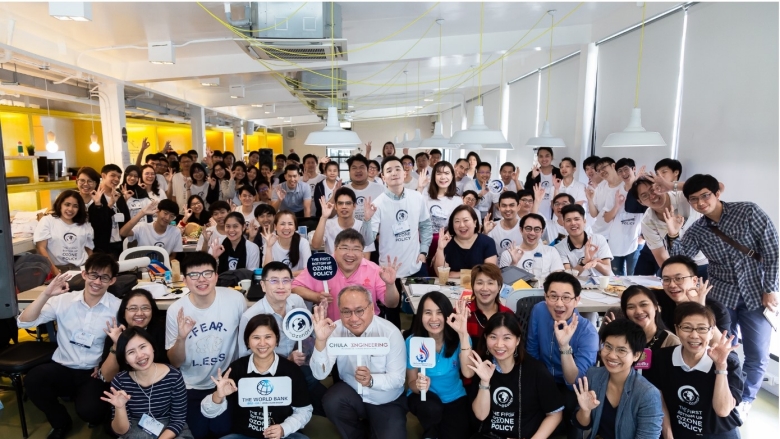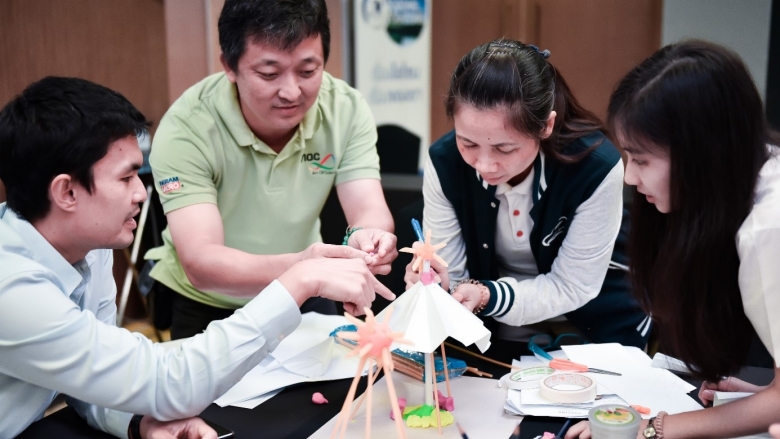Protecting the ozone layer also protects the climate. While the ozone layer is 10 kilometers high up in the sky, simple actions to protect it can be so close to people. These were the thoughts behind the “Ozone, OurZone” campaign, jointly launched by Thailand’s Department of Industrial Works, Chulalongkorn University, Government Savings Bank and the World Bank to enhance understanding and public awareness of the ozone and climate protection issues.
Serving as a natural shield, the ozone prevents harmful UV-B from reaching Earth. Too much of UV-B can cause skin cancer and eye cataracts, lowering the human immune system and can adversely impact the food chain.
Through a series of workshops, the campaign’s aim was to increase people’s awareness of their ability to protect the climate and the ozone layer. More than 300 participants from the public sector, academia, manufacturers and students from many provinces across Thailand joined.
“I understand the importance of the ozone and that protecting it is good for our health. However, I just realized there are many things I never knew,” said Pawak Worasun, a student from the Faculty of Economics, Khon Kaen University in Northeastern Thailand.
From refrigerators, air-conditioners, laptops, shaving creams, deodorants to the mattress people sleep on at night, it was the first-time participants learned how the appliances and equipment people use throughout the day are made with or can contain ozone-depleting substances.
Thailand has taken great strides to phase this out as a member of the Montreal Protocol, which controls the production and consumption of chlorofluorocarbons (CFCs) and hydrochlorofluorocarbons (HCFCs). It was the first developing country to ban the manufacturing and import of CFC refrigerators in 1997. It was also the first developing country to convert air-conditioners from using HCFCs to new technology that was ozone-friendly in 2017. Thailand’s next step will be ratifying the Kigali Amendment to the Montreal Protocol which specifies targets and timetables for replacing hydrofluorocarbons (HFCs) with more planet-friendly alternatives.
“I really enjoyed the presentations and group work to design modules for ozone protection. The ozone is relevant to us more than I thought. It connects to industries and our daily lives. As a farmer, what I can do is to adjust my behavior,” said Shinapas Poona Manmae, an organic farmer from Kanchanaburi province.



